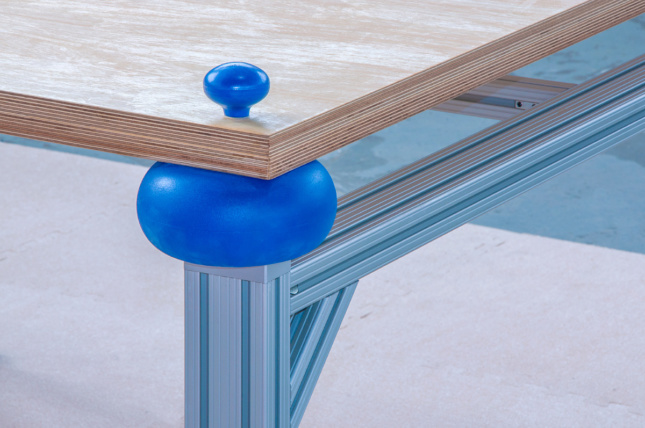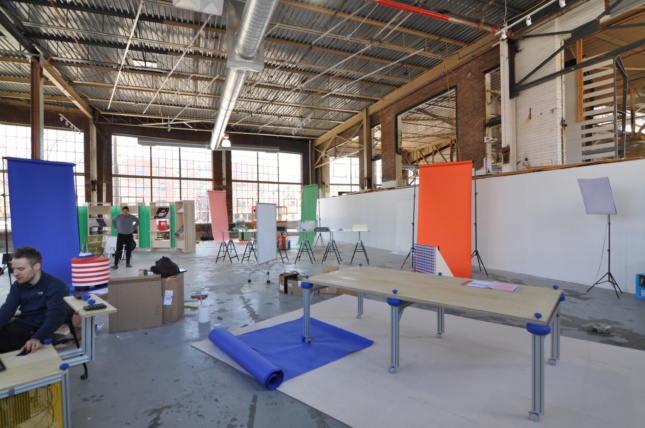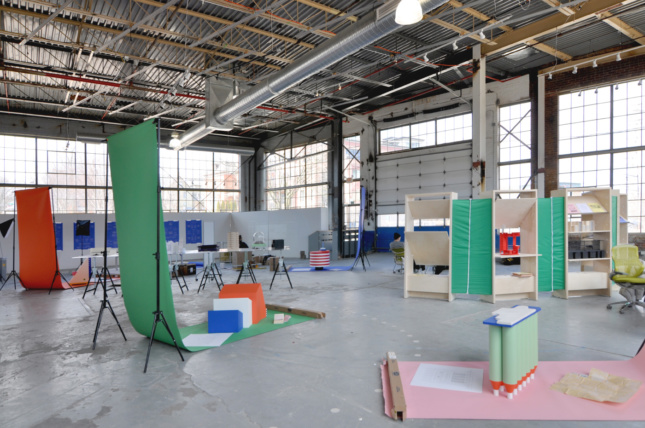The 2019-2020 college fellowship exhibition at the University of Michigan’s Taubman College of Architecture is meant to render the invisible visible, and make the inextricable parts of architecture tangible. In Practice, Product, Protocol, on view through April 30, Jacob Comerci, Matiss Groskaufmanis, and Eduardo Mediero interrogate the demands of architectural productivity, the move to communal properties, and the collapse of urban character.
As the show’s brief states, technology and cultural shifts have demonstrably blurred the lines between work and home, personal and private, and more control is being given over to third-party commercial providers. Landlords, coworking spaces, technology and financial services companies, et al hoover up personal data—so where can the profession go from here? The three fellows each probe different aspects of this new, somewhat one-sided relationship we all experience, while an open call to design a room that “considers alternative modes of cohabitation through demanial ownership, or public domain,” was realized by contributions from seven different architecture firms from around the world.
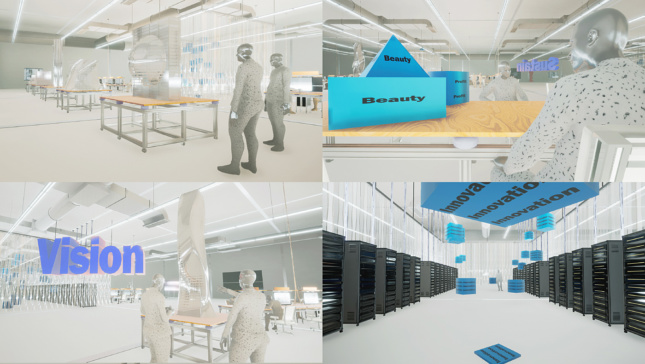
Groskaufmanis’s contributions recognize the rise of intangible assets, whether they be branding, information, or management services. To visualize the myriad digital programs that have decentralized architecture, he created a speculative, virtual workspace where up to 567 employees could work on up to 288 architecture projects at once. When freed from physical constraints of the office, workers could migrate to environments only constrained by internet bandwidth; however, Groskaufmanis has also seeded his VR office with “hallucinations” of “fatigue studies, commodity forms, BIM protocols and other technologies of management” as cautionary didactics.
Comerci’s work touches on similar themes, as he devised a system for conducting guerilla architecture by taking a cue from coworking companies. As middlemen landlords take advantage of economies of scale by renting floors and even entire buildings and then parceling out the space to individuals or small companies while providing amenities, Comerci has envisioned a self-contained station for working that can be easily moved. The flexible office setup, which Comerci describes as a blend between furniture design, industrial design, and architecture, can be easily assembled and disassembled for tactical interventions in the built environment.
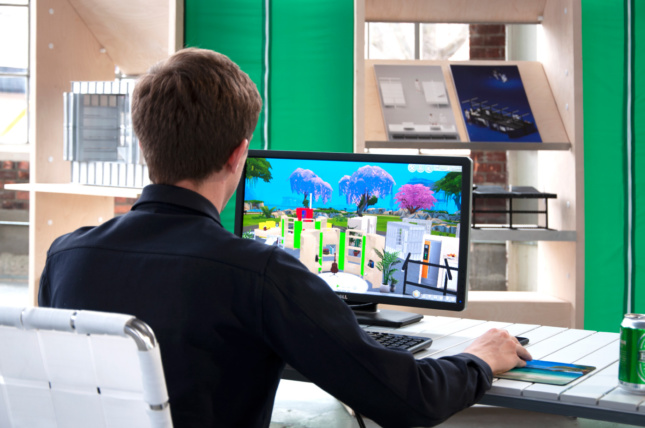
Mediero took a different, but still related approach, instead choosing to focus on Madrid, where he practices architecture as the founder of HANGHAR. Taking aim at the financial instruments such as real estate speculation, which is forcing Madrid towards a housing crisis, Mediero realized the often opaque structures of “finance capitalism” as real objects. Ultimately, these designs would be put to use in a world where financial structures and property ownership are aimed towards protecting the public rather than for accruing personal wealth.
While the show is, obviously, inaccessible due to the ongoing novel coronavirus pandemic, the ideas presented in Practice, Product, Protocol presciently align themselves with the future the virus is helping to accelerate—as Phil Bernstein noted, cities, the way we work, and even ownership will be very different when this is all said and done.









